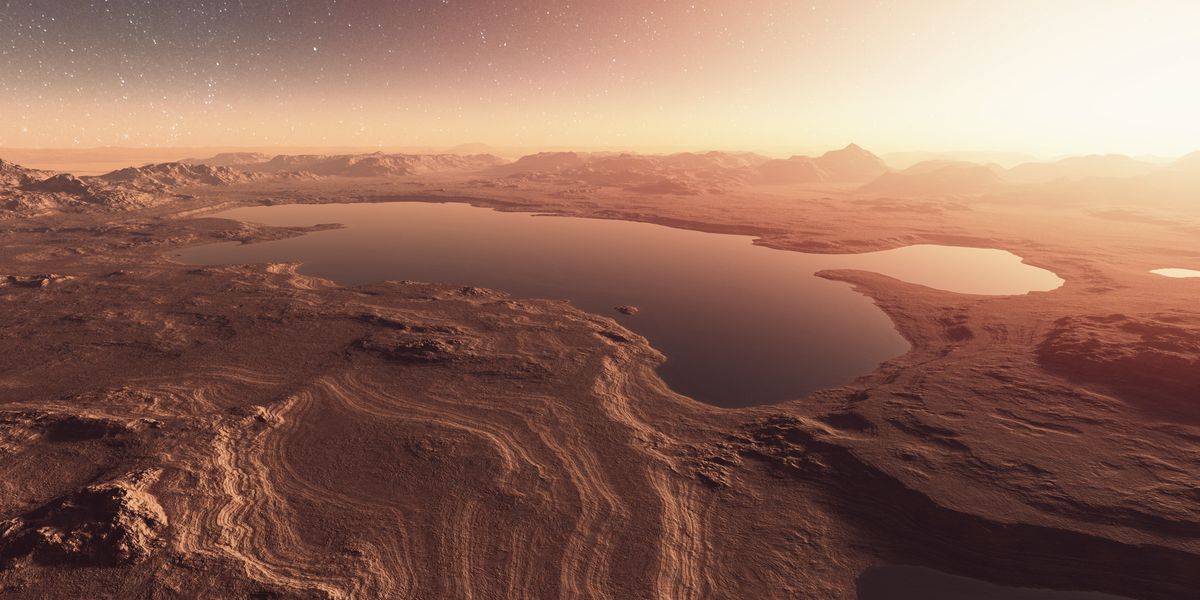- A new study in natural astronomy theorizes that the Martian crust provided favorable conditions for a subterranean world of microbial life.
- Living underground, the microbes would have been shielded from radiation.
- But the warmth of a younger Mars may have been cooled by the methane produced by the microbes, preventing any chance of further growth.
French researchers believe that simple microbial life may have once existed underground on Mars. They also believe that the mere presence of these microbes would have been enough to suffocate their lives.
The new study, published in natural astronomy, says data from Martian crust shows that the environment would have been ripe for underground colonies of microbes when Mars was warmer and wetter. The dirt would have protected the microbes from harmful radiation and allowed them to thrive. Researchers specifically focused on whether dihydrogen-based methanogens could have lived on Mars, since hydrogenotrophic methanogenesis — the conversion of carbon dioxide into methane using dihydrogen — was believed to be one of the earliest existing metabolic processes for life on Earth.
🚀 You love Mars. So do we – join Pop Mech Pro.
However, researchers believe this subterranean world may have caused its own demise: the methane emitted by the microorganisms would have been enough to kill them.
“We find that subsurface habitability was highly likely and limited mainly by the extent of surface ice coverage,” the study states. “Biomass productivity may have been as high as in the early Earth ocean. However, the predicted shift in atmospheric composition due to methanogenesis would have triggered a global cooling event, ending potential early warm conditions, affecting surface habitability and forcing the biosphere deep into the Martian crust.”
The researchers, led by Boris Sauterey, believe the microbes would have pulled hydrogen from a carbon dioxide-rich atmosphere and replaced it with methane, forcing surface-near organisms deeper in search of survival. In Mars’ already warm climate, this compromise would not have been a favorable outcome for either the planet or the microbes – a stark contrast to theories of what happened on Earth, where this give-and-take would bring the microbes closer to the surface .
The study came just weeks after other research was published in Earth and Planetary Science Letters, supporting that the earliest form of Mars was bathed in a dense atmosphere that supported warm — or even hot — oceans for millions of years. The researchers show that water vapor condensed and remained on early Mars, using a model of the Martian atmosphere that “contrasts the high temperatures associated with the formation of the planet in a molten state, with the formation of the first oceans and the first Atmosphere connects,” according to a news publication. Data from three-billion-year-old clay collected by the curiosity Rover supports their claims.
“We believe we have modeled an overlooked chapter in the earliest history of Mars in the period immediately after the planet’s formation,” says Kaveh Pahlevan, research scientist at the SETI Institute and lead author of the Earth and Planetary Science Letters study, in a press release. “This dense atmosphere would have created a powerful greenhouse effect that would have allowed very early oceans of warm to hot water to thrive on the surface of Mars for millions of years by [molecular hydrogen] was gradually lost to space. For this reason we conclude that Mars was born wet at a time before the Earth formed itself.”
The two studies do not cover the same period: Pahlevan’s model focuses on the Hesperian period, around 3,700 to 3,000 million years ago, and Sauterey’s study focuses on the earlier Noachian period, around 4,100 to 3,700 million years ago. But what they do have in common is the need to better understand how the Martian climate has changed over time – and why.
Tim Newcomb is a journalist based in the Pacific Northwest. He covers stadiums, sneakers, gear, infrastructure and more for a variety of publications including Popular Mechanics. His favorite interviews included sit-downs with Roger Federer in Switzerland, Kobe Bryant in Los Angeles, and Tinker Hatfield in Portland.

